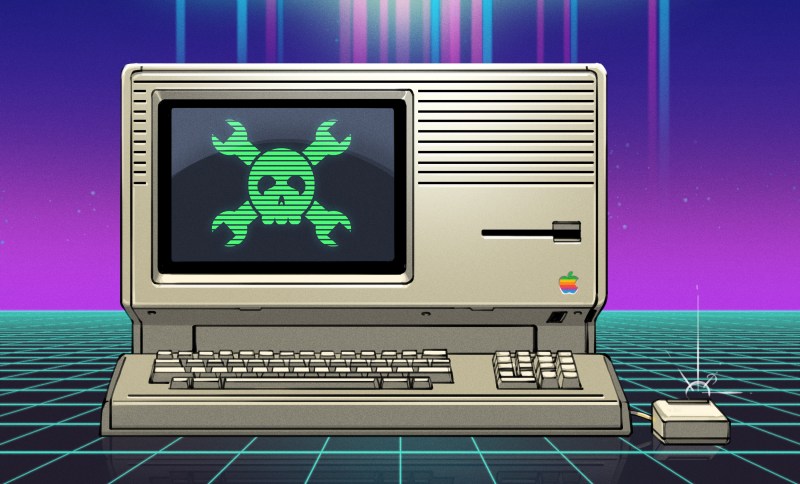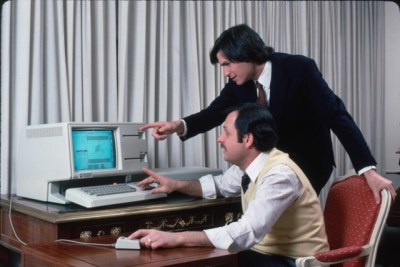
Forty years ago, on January 19th of 1983, Apple released the Lisa, which was in many ways a revolutionary system. On January 19th of 2023, to celebrate the system’s 40th birthday, the Computer History Museum released the source code for Lisa OS version 3.1 under the Apple Academic License Agreement. Written in Pascal, the source includes over 1,300 source files, covering the OS itself, the Lisa Toolkit development system and a number of applications. The questions one might ask at this point include what the Apple Lisa even is, and why it was such an important system in computer history.
This especially in light of the terrible flop that the Lisa turned out to be, with only 10,000 units sold over two years. Part of this failure was definitely due to the introductory price, that was set at $9,995 (over $27,000 in 2021 dollars). Although it featured an OS with memory protection, despite the lack of an MMU on the Motorola 68k, among other advanced features that placed it well beyond other desktop computers of the time, it got quickly crushed in the market by Apple’s MacIntosh, even after successive Lisa successor releases that sought to address its shortcomings.
What’s In A Name
Whether the Lisa system truly was named after Steve Job’s first daughter (Lisa Nicole Brennan), an acronym for ‘Locally Integrated Software Architecture’ (LISA) or some torturous backronym may be a factoid that is forever lost to the sands of time, but that the Lisa’s development was itself torturous is beyond question.
The idea for the system was sparked when Steve Jobs, as part of a delegation from Apple, visited PARC in 1979 and received a demonstration of SmallTalk on the Xerox Alto system, with its GUI and mouse-driven interface. In the mind of Jobs, the Lisa would be the first commercialized, GUI-equipped desktop computer. At the time Apple was trying to develop a successor to the Apple ][, which was a best-selling, but still command line-based system.
Using the Motorola 32-bit 68000 MPU as the core, the new system would feature an object-oriented programming language — Object Pascal — hard drive storage, and a GUI- and mouse-driven interface on top of Lisa OS. Even as the project proceeded, Jobs was removed from the Lisa project by the Apple board of directors in 1982, which is where Steve Jobs’ role in the Lisa ends and the success story of the MacIntosh begins.

Although the Lisa was still finished and released, it was the MacIntosh that would see many upgrades and improvements based on lessons learned with the Lisa. In that sense the MacIntosh is the spiritual successor of the Lisa, which itself derives from Xerox’s Alto. As a low-cost desktop system, the MacIntosh did not feature the same high-end specs as the Lisa, but as a commercial success it opened new avenues for successor systems. Meanwhile the Lisa 2 was released in 1984, with a range of cost-cutting measures, such as dropping the twin Twiggy floppy drives for a single 3.5″ 400 kB FDD and lowering the amount of installed RAM.
Interestingly, the MacIntosh development used the Lisa systems as test systems, including the development of the first MacIntosh software, since architecturally they were still quite similar. The Lisa range of Apple computers would reach their end with the Lisa 2/10 (later rebranded as the MacIntosh XL). In 1986 the Lisa line of computers along with Lisa OS was officially discontinued.
The Lisa Legacy
It’s notable that despite Steve Jobs’ disbelief that Xerox would not simply commercialize the Alto system, Xerox ultimately would release the AMD Am2900-based Xerox Star 8010 in 1981, for a measly $16,595 (in 2021 dollars: $49,460). This meant that despite the overlap in features between Xerox’s and Apple’s offerings, Xerox targeted the government and research markets.
The Lisa remained trapped in a kind of limbo between the need to be as cost-effective as possible, while offering advanced features such as memory protection. The MacIntosh did not bother with such features, which allowed its MacOS to run faster on the same hardware, even if it was more prone to crashing and locking up.

As noted by Byte Magazine in its February 1983 preview of the Lisa, many people were interested in the features offered by the system, especially in comparison with the IBM PC that was making waves at the time. The mouse-based OS was, at the time, a revolution. They expressed the hope that Apple would figure out a way to offer these features at an affordable price, which as we now know never came to fruition. At least not within the Lisa range of computers, but in a sense the PowerPC-based Macs would. When OS X replaced MacOS and gave it the memory protection and other features that Lisa OS had pioneered years prior, it would have felt to many like justification for the effort spent on Lisa OS and the underlying hardware.
Perhaps that Lisa was simply ahead of its time, trying to hit features at a price target that was not yet achievable. Lisa OS was forced to implement its memory protection purely in software, which put a lot more strain on the already fairly anemic CPU. The task- and document-based GUI brought a lot of new ideas to the table, some of which can still be seen in OS X (now again MacOS) today.
As a purely financial investment, the Lisa was a flop, but as a development platform and a turning point in computer history its value is perhaps beyond measurement.
0 Commentaires